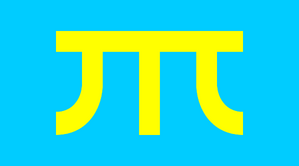
Flag of Khanate of Sibir 1468 AD/CE to 1598 AD/CE
Capitals: Tyumen, Sibir

Continent: Asia
Official Languages: Siberian Tatar, Bashkir, Sellkup, Khanty, Mansi
Established: 1468 AD/CE
Disestablished: 1598 AD/CE
History:
The Sibir Khanate was administered by Mirzas who originated from various indigenous Siberian tribes. These Mirzas organized loosely knit dominions, which were all under the nominal authority of the Khan of Tyumen and Sibir. Mirzas also led the warriors of the Khanate of Sibir into battle and owed nominal allegiance to the Khan of Tyumen and Sibir.
Islam was the professed religion of the Sibir Khanate; it was the religion of the ruling Khan of Tyumen and Sibir. Grand mosques, palaces and fortified walls were constructed in both Tyumen and Sibir.
The leading Imams and Muftis of the Sibir Khanate are known to have had some influence in the nearby regions of Kazan and even in Samarqand. The Khanate of Sibir was the northernmost Muslim state in recorded history; its territories even included parts of the shore of the Arctic Ocean.
The Khanate of Sibir was founded in the fifteenth century, at a time when the Mongols of the house of Jochi were generally in a state of decline. The original capital of the Khans was Chimgi-Tura. The first Khan was Taibuga, who was a member of the Borjigin. He was succeeded by his son Khoja or Hoca, who was in turn succeeded by his son Mar.
The Taibugids' control of the region between the Tobol and middle Irtysh was not uncontested. The Shaybanids, descendants of Jochi, frequently claimed the area as their own. Ibak Khan, a member of a junior branch of the Shaybanid house, killed Mar and seized Chimgi-Tura. A Taibugid restoration occurred when Mar's grandson Muhammad fled to the eastern territories around the Irtysh and killed Ibak in battle in c. 1493. Muhammad decided not to remain at Chimgi-Tura, but chose a new capital named Iskar (or Sibir) located on the Irtysh. The Russian conquest of Kazan in 1552 prompted the Taibugid Khan of Sibir, Yadigar, to seek friendly relations with Moscow. Yadigar, however, was challenged by a Shaybanid, Ibak's grandson Kuchum. Several years of fighting (1556–1563) ended with Yadigar's death and Kuchum becoming Khan.
Kuchum attempted to convert the Siberian Tatars, who were mostly shamanists, to Islam. His decision to conduct a raid on the Stroganov trading posts resulted in an expedition led by the Cossack Yermak against the Khanate of Sibir. Kuchum's forces were defeated by Yermak at the Battle of Chuvash Cape in 1582 and the Cossacks entered Iskar later that year. Kuchum reorganized his forces, killed Yermak in battle in 1584, and reasserted his authority over Sibir.
Over the next fourteen years, however, the Russians slowly conquered the Khanate. In 1598 Kuchum was defeated on the banks of the Ob and was forced to flee to the territories of the Nogai, bringing an end to his rule.
The Khanate of Sibir and the town of Tyumen were founded by Taibuga probably some time between 1405 and 1428. The latter was probably of Keraite origin. However, some scholars also attempt to link the Taibugids to the Kipchak elites and others. Control alternated between the descendants of Taibuga and the Shaybanids who had descended from Genghis Khan. There are hints that the Shaybanids were more connected to the steppe nomads and that the Taibugids were more connected with the forest peoples to the north and east.
Taibuga's father was called On (On-Son, Onsom and other variants). Grousset says that they were 'the issue of Taibugha-bäki' without explanation ('bäki' (bek) was a princely suffix and Taibuqa was a Naiman chief at the time of Genghis Khan.) A few sources identify him with Bek Ondi Oglan, the great-great-great grandson of Shayban, and thus a Shaybanid. The Stroganov chronicle says that On was killed by a chief called Chingi who spared Taibuga, sent him to fight the Ostyaks and granted him his own principality. Taibuga founded Tyumen and named it Chingi-tura in honor of his benefactor. Another source makes On a Nogai whose 'Hoflager' (German for 'court-camp') was Kasyl-Tura at the mouth of the Ishim River about 160 kilometres (100 mi) east of Tobolsk. Another source says that when Tokhtamysh was defeated he fled to the 'land of Sibir' (the first mention of 'Sibir' in Russian chronicles). Here he was protected by On until both were killed by Edigu about 1405.
There is no more information about Taibuga except that some say he drove the Novgoroders from his lands. In 1428 a 17-year old Shaybanid called Abu'l-Khayr Khan was chosen Khan on the Tura River (possibly at Tyumen). This implies that the Taibugids had been pushed aside. When he led his followers south for better things the remaining Shaybanids gathered around Ibak Khan, who was from a junior branch of the house. The Taibugids must have been restored because some time between 1464 and 1480 Ibak killed the Taibugid Mar and made himself Khan. In 1483 Fyodor Kurbsky is said to have led an army to the Irtysh River, but this had no lasting effects. Ibak went to the Volga where he killed the last Khan of the Golden Horde. Returning, he was killed by Mar's grandson called Mamuk or Makhmet or Mamet (about 1495). Makhmet moved the capital from Tyumen to Sibir and was briefly Khan of Kazan (1496). In 1552 the Taibugids Yediger and Bekbulat congratulated Ivan the Terrible on his conquest of Kazan. Later they paid limited tribute to Russia. In 1563 Ibak Khan's grandson Kuchum seized the throne from Yediger and Bekbulat. In 1573, following the Russo-Crimean War (1571) he stopped paying tribute and raided the Perm lands. In 1582, he was driven out by Yermak and died some time after 1600.